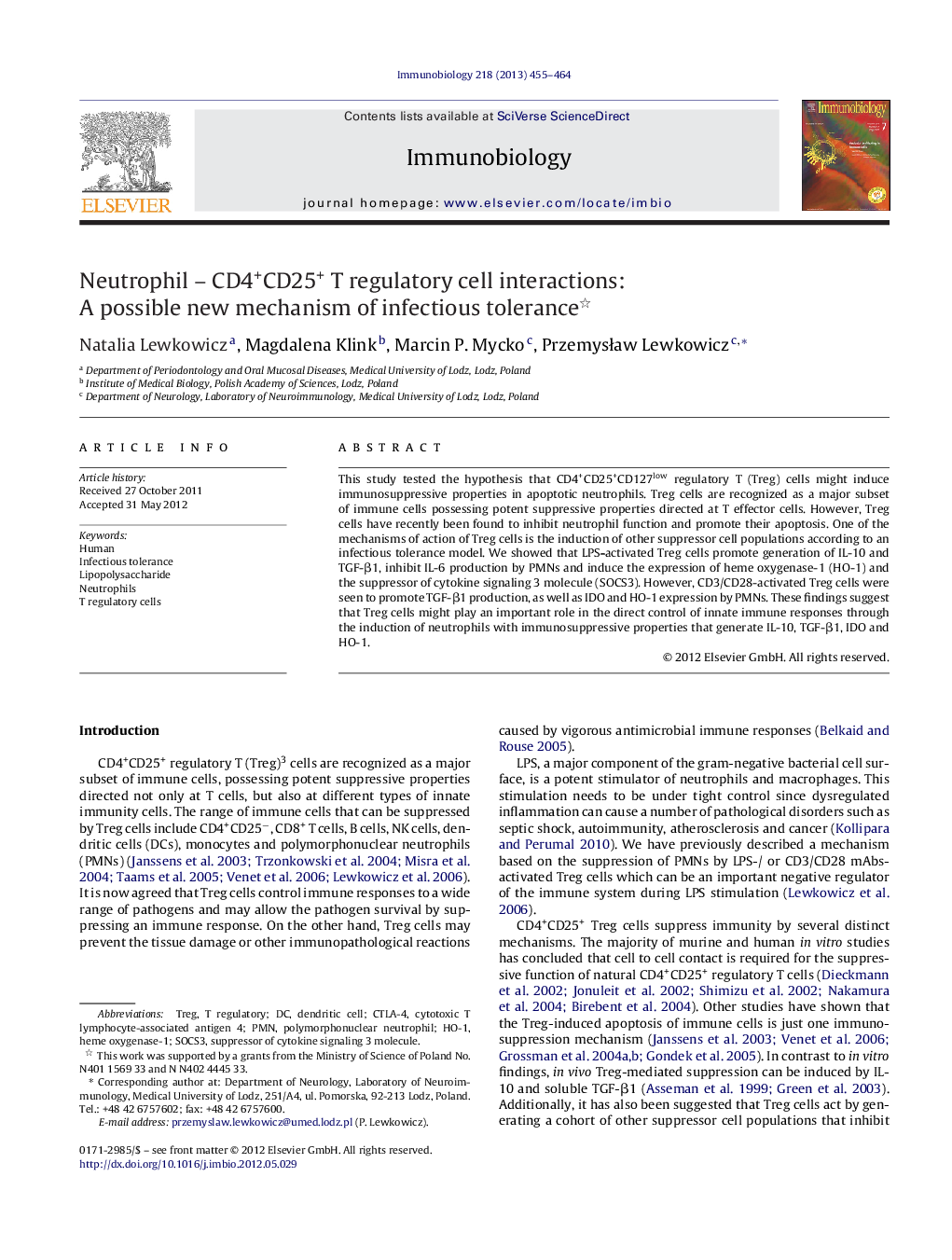| Article ID | Journal | Published Year | Pages | File Type |
|---|---|---|---|---|
| 10941015 | Immunobiology | 2013 | 10 Pages |
Abstract
This study tested the hypothesis that CD4+CD25+CD127low regulatory T (Treg) cells might induce immunosuppressive properties in apoptotic neutrophils. Treg cells are recognized as a major subset of immune cells possessing potent suppressive properties directed at T effector cells. However, Treg cells have recently been found to inhibit neutrophil function and promote their apoptosis. One of the mechanisms of action of Treg cells is the induction of other suppressor cell populations according to an infectious tolerance model. We showed that LPS-activated Treg cells promote generation of IL-10 and TGF-β1, inhibit IL-6 production by PMNs and induce the expression of heme oxygenase-1 (HO-1) and the suppressor of cytokine signaling 3 molecule (SOCS3). However, CD3/CD28-activated Treg cells were seen to promote TGF-β1 production, as well as IDO and HO-1 expression by PMNs. These findings suggest that Treg cells might play an important role in the direct control of innate immune responses through the induction of neutrophils with immunosuppressive properties that generate IL-10, TGF-β1, IDO and HO-1.
Keywords
Related Topics
Life Sciences
Biochemistry, Genetics and Molecular Biology
Cell Biology
Authors
Natalia Lewkowicz, Magdalena Klink, Marcin P. Mycko, PrzemysÅaw Lewkowicz,
